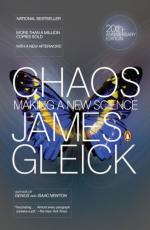
|
| Name: _________________________ | Period: ___________________ |
This test consists of 15 multiple choice questions and 5 short answer questions.
Multiple Choice Questions
1. What science deals with the visible, orderly outcomes of self-organization and the common principles behind similar patterns?
(a) Pattern formation.
(b) Theoretical physics.
(c) Fluid dynamics.
(d) Thermodynamics.
2. What refers to systems whose behavior is intrinsically non-deterministic?
(a) Fractal.
(b) Stochastic.
(c) Incongruity.
(d) Oscillation.
3. In mathematics, what refers to a map that exhibits some sort of chaotic behavior?
(a) Space-time maps.
(b) Behavioral maps.
(c) Chaotic maps.
(d) Stability maps.
4. When was Heinz-Otto Peitgen born?
(a) 1945.
(b) 1942.
(c) 1948.
(d) 1939.
5. Through this work on the study of quantum behavior of superfluid helium, Albert Libchaber invented what?
(a) Euclidean space.
(b) Helium in a Box.
(c) Fractal compression.
(d) Thermodynamics.
6. How old was Mitchell Feigenbaum when he was offered a post at the Los Alamos National Laboratory?
(a) 35.
(b) 27.
(c) 22.
(d) 29.
7. When was Albert Libchaber born?
(a) 1934.
(b) 1927.
(c) 1916.
(d) 1922.
8. What refers to the spread of momentum between particles of matter, usually in the liquid state?
(a) Momentum diffusion.
(b) Chaos theory.
(c) Theoretical physics.
(d) Turbulent flow.
9. At what institution did Albert Libchaber become a professor of physics in 1991?
(a) The Massachusetts Institute of Technology.
(b) Harvard University.
(c) Princeton University.
(d) Caltech.
10. What occurs at higher velocities where eddies or small packets of fluid particles form leading to lateral mixing?
(a) Momentum diffusion.
(b) Turbulent flow.
(c) Chaos theory.
(d) Theoretical physics.
11. In vector calculus, what refers to a vector field that points in the direction of the greatest rate of increase of the scalar field, and whose magnitude is the greatest rate of change?
(a) Boundary layer.
(b) Cantor dust.
(c) Euclidean space.
(d) Gradient.
12. When did Mitchell Feigenbaum meet Michael Barnsley at a conference in Corsica?
(a) 1973.
(b) 1982.
(c) 1967.
(d) 1979.
13. Where did Michael Barnsley earn his Ph.D.?
(a) Johns Hopkins University.
(b) The University of Wisconsin-Madison.
(c) The University of Paris.
(d) The Massachusetts Institute of Technology.
14. Where is the Scripps Research Institute headquartered?
(a) La Jolla, California.
(b) Portland, Oregon.
(c) San Francisco, California.
(d) Tacoma, Washington.
15. Who began to call the global construction of fractals "the chaos game" according to the author in Chapter 8, "Images of Chaos"?
(a) Michael Barnsley.
(b) Albert Libchaber.
(c) Leo Kadanoff.
(d) Conrad Aiken.
Short Answer Questions
1. What refers to a rough or fragmented geometric shape that can be split into parts, each of which is a reduced-size copy of the whole?
2. In physics and systems theory, what states that, for all linear systems, the net response at a given place and time caused by two or more stimuli is the sum of the responses which would have been caused by each stimulus individually?
3. When did Albert Libchaber join the faculty at The Rockefeller University?
4. What is a measure of some property of a piece of software or its specifications?
5. What is a measure of the resistance of a fluid which is being deformed by either shear stress or tensile stress?
|
This section contains 445 words (approx. 2 pages at 300 words per page) |

|




